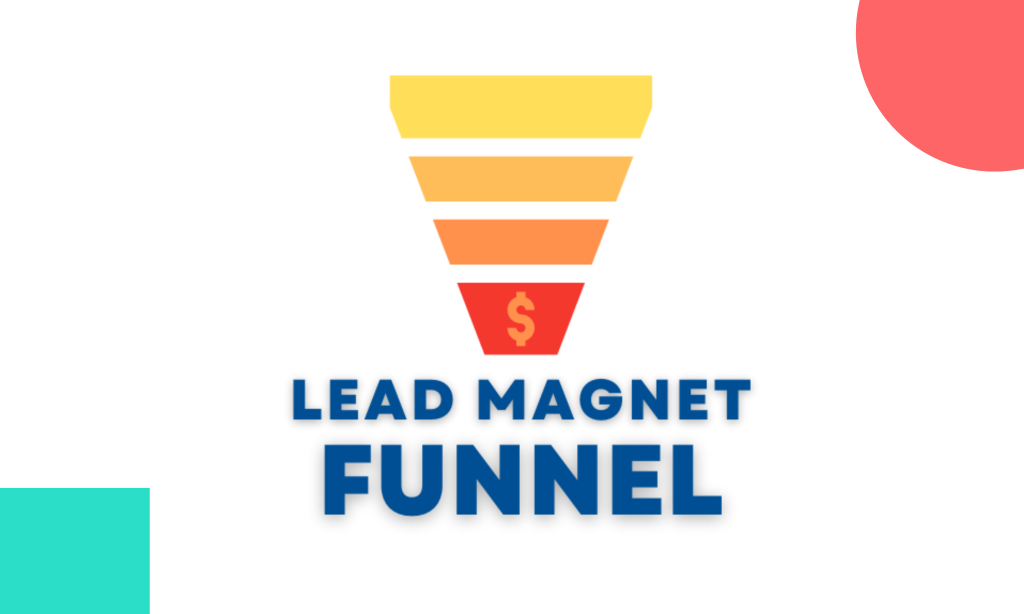Email marketing is a lucrative and powerful tool with an impressive ROI of 4200%. However, even with frequent email campaigns, low open and response rates can hinder your success.
Understanding the art of effective email communication is crucial to unlocking the potential of your campaigns. Shake off these five bad email habits in 2025 to elevate your email marketing game and get more wins.
1. Not Taking Advantage of Video Content
Marketing emails can seem uninspiring and impersonal, especially to an audience that already gets bombarded with similar messages from other brands.
To create innovative emails that capture a time-strained audience’s attention, your brand marketing should be interactive, friendly, and natural. Incorporating video content into your emails can revitalize your brand messaging and make your emails stand out in a crowded marketplace.
For instance, following a trade show, you might send out follow-up emails with footage from the event.
This way you can:
Provide a memorable way to follow up with attendees
Remind them of your event (regardless of whether they went or not)
Keep your brand in mind when they need your product or service
Instead of linking to a text-based how-to article in your product launch email, consider using a visually engaging how-to video:
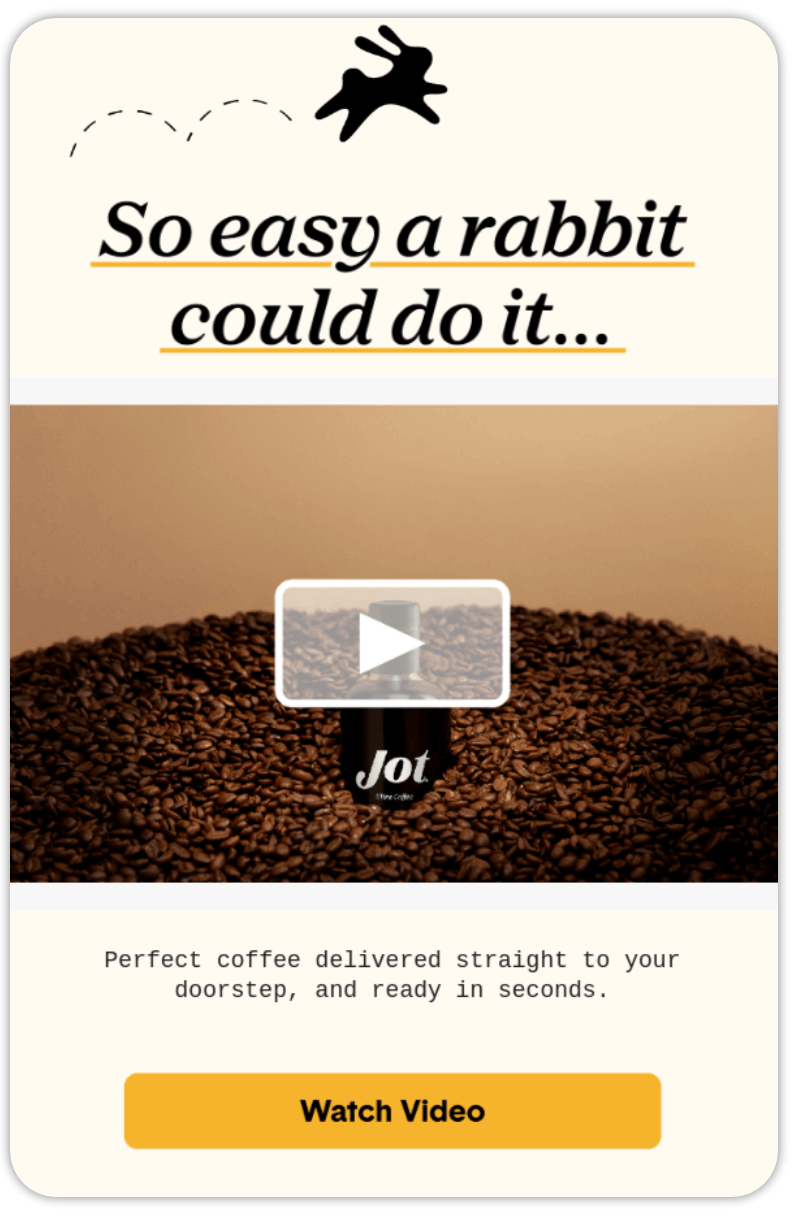
Well-designed videos add a unique touch to your email and make your information easier for viewers to understand. By strategically placing videos into your email marketing campaigns, you’ll create a more immersive experience for your audience.
Thanks to the versatility and efficiency of video content, 64% of marketers plan to increase their video investment in 2023. So if you want to keep pace with the competition, consider developing a solid video content strategy this year to ensure your efforts are organized and effective.
2. Relying on AI Software to Write All Your Emails
While content-generating artificial intelligence (AI) software, such as ChatGPT and Lensa, are becoming increasingly popular, you should think carefully before relying on them for email marketing tasks.
For starters, AI software can make your email marketing impersonal. Suppose you asked ChatGPT to write a prospecting email. Even if you give specific, well-written prompts, ChatGPT will have difficulties personalizing information for specific recipients, such as their name, interests, or pain points.
However, you need these details to show your contacts you care about them and have researched ready solutions to their problems. At its current state, AI lacks such essential people skills that go a long way in humanizing brand communication. While AI might be able to cut down your email writing time, it still won’t have the empathy, adaptability, and interpersonal abilities of a human content writer.
Information accuracy and copyright issues are also major risks of AI, as they rely on inputted data that can potentially lead to property violations. Additionally, AI writers are unable to carry out thorough fact checks and it often gives commonplace answers, as their research and creative capacities are limited to the data they receive.
Even so, AI software can be very useful at other stages of your email marketing campaign. For example, you could use it to automate a follow-up email sequence or generate content ideas. In other words, AI software is a helpful assistant but not a suitable replacement for human creativity and personalization.
3. Ignoring User-Generated Content (UGC)
User-generated content (UGC) is any content that customers create and share, such as product reviews, blog posts, social media mentions, hashtag contests, and customer testimonials.
UGC is a rich source of organic traffic because customers see it as more authentic and trustworthy than publisher-generated content. In fact, 49% of people trust online product reviews as much as recommendations from friends and family.
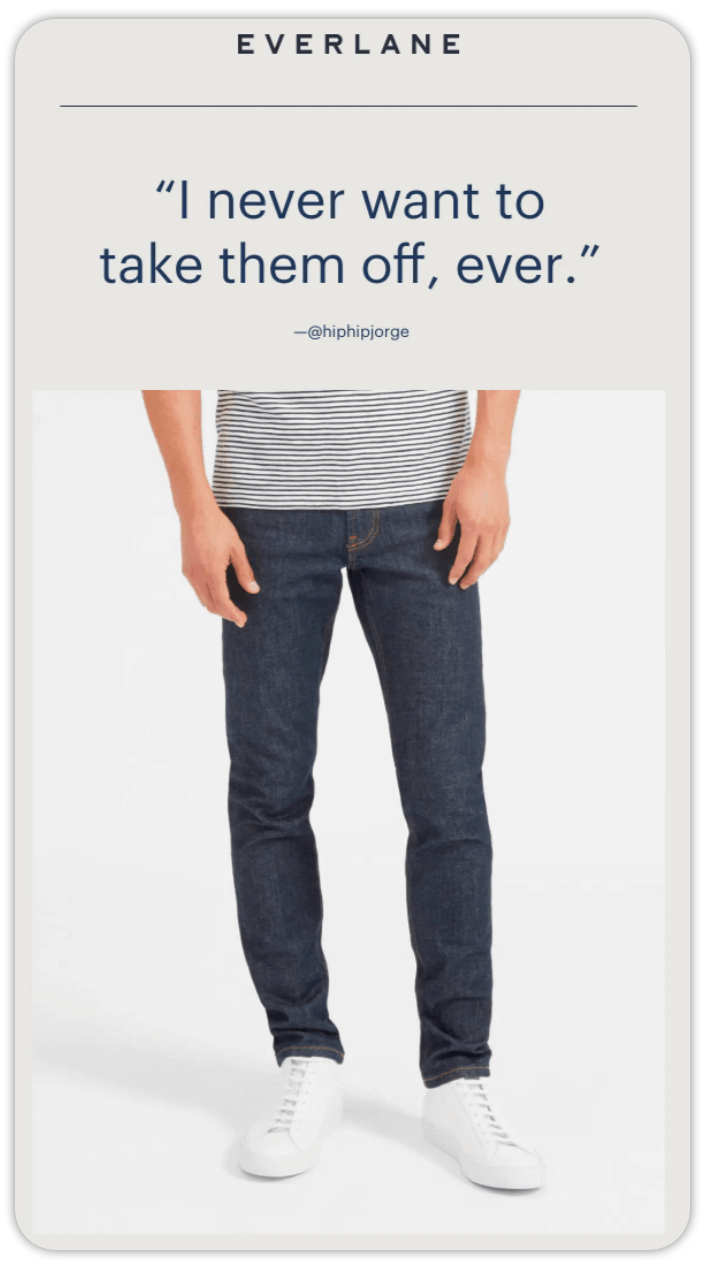
Integrating UGC, such as social media mentions, into your email newsletters makes them more engaging and boosts your click-through rate by 75%. What’s more, SaaS software such as Reviews.io has simplified collecting UGC and integrating it into your email marketing campaigns, making it easier for you to tap into your user-generated resources.
You can also gather UCG through traditional means by inviting customers to participate in product satisfaction surveys or putting up a customer testimonial page on your company’s website. These ways give you enough UGC to use in different email marketing campaigns as you see fit.
Also, remember to choose the right type of UGC for your email campaigns. While long-form UGC such as lengthy product reviews may seem detailed and helpful, try to avoid using them in your emails. Instead, opt for short and impactful UGC that can grab a recipient's attention quickly.
Why? Lengthy UGC can overwhelm your reader and detract them from the main message of your email, making it less effective. But by focusing on short and sweet UGC with catchy tag lines or one-liners, you'll be able to drive a recipient to the most juicy parts of your content and increase your chances of engagement.
4. Using Spam Trigger Words In Your Emails
Nothing is as discouraging as investing your valuable time and resources into an impressive email campaign, only for your emails to end up in your recipients’ spam folder. Considering that almost half of all emails are spam, you should be especially careful not to use trigger words that’ll cause your emails to be blocked or marked as spam by recipients or anti-spam filters.
Additionally, spam trigger words may negatively impact your sender score and make it more difficult for your emails to reach potential customers in the future.
Optimize your email deliverability by mastering how to use Gmail and its filters; this knowledge is crucial for steering clear of spam trigger words and ensuring your messages are received.
Here’s a category list of spam trigger words to avoid in your 2025 email marketing campaigns:
Manipulative Words
While stocks last
Action required
Act now
Do it now
Deal ending soon
Hurry up
New customers only
Don’t delete
Download now
Don’t hesitate
Overpromising Text
100% satisfaction
0% risk
100% free
Instant delivery
Guaranteed to work
Free gift
Fast discounts
Best-selling product of the year
Approved by experts
No catch
Money-Related Claims
Make fast money
100% cashback
Full refund
Make money from home
Get out of debt today
Pure profit
No credit check
Avoid bankruptcy
Financially independent
Lowest insurance rates
Furthermore, always include an unsubscribe button in your emails, and don’t use overly decorative font formats or all-caps text.
5. Ignoring Color Psychology
If you don’t give much thought to your email color scheme, you’re doing your email campaign a great disservice. Why? Because color psychology evokes different emotions and associations in customers. That means you can trigger certain emotions in your target customers by using the right color scheme in your email campaigns.
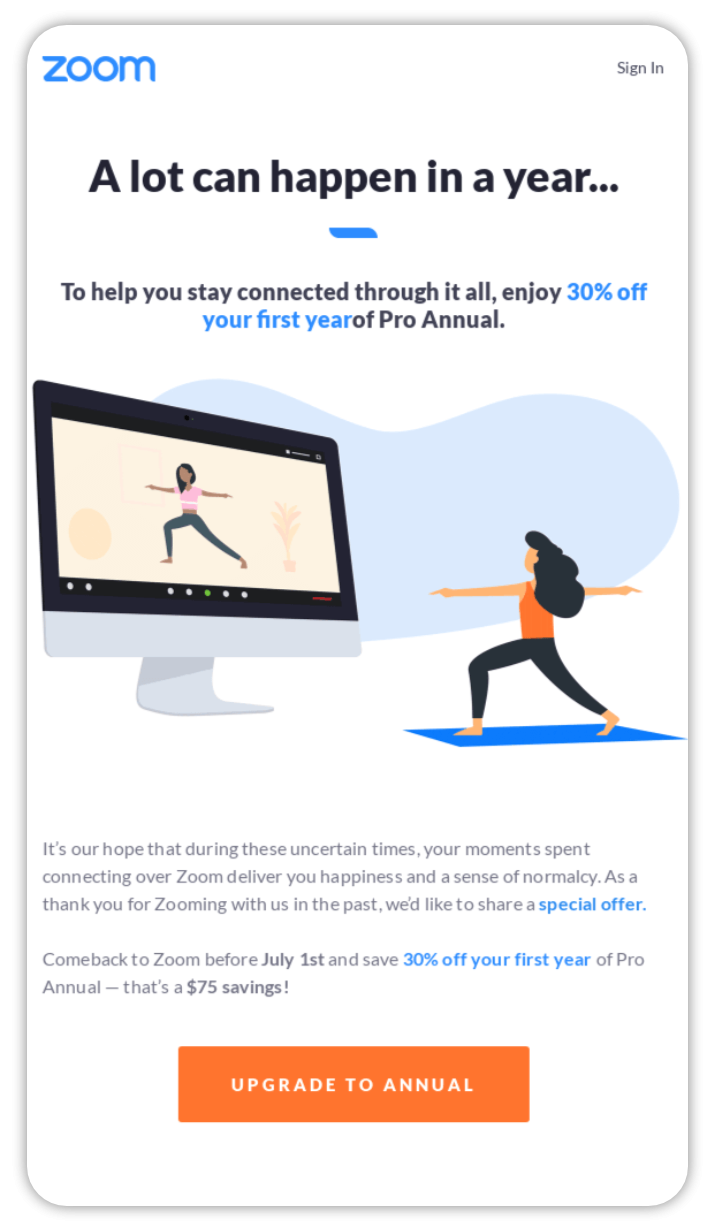
You only need to master what emotions each color provokes in your target audience and get the right combination. For instance, orange symbolizes enthusiasm, while pink is associated with kindness and romance. Thus, when sending a product launch email, try using orange as the dominant color in your call-to-action (CTA) button scheme to cultivate excitement in your audience:
Color psychology should never be an afterthought in email marketing, as it does more than influence how people interact with your message. Beyond prompting emotions, it also:
Enhances your brand recognition
Influences customers’ purchase decisions, with 85% citing color as the main reason why they buy certain products
Attracts different customers based on demographics such as gender (for instance, more women than men like the color purple)
In addition to understanding the emotions that each color evokes, don’t forget to stay informed about trendy color palettes.
For example, Pantone’s color of 2023 is “Viva Magenta.” A vibrant, energetic hue like magenta can add a modern touch to your email campaigns and capture your audience's attention. Whether it's used as an accent or as the dominant color, taking advantage of the color of the year can help you create email campaigns that are both on-trend and memorable:
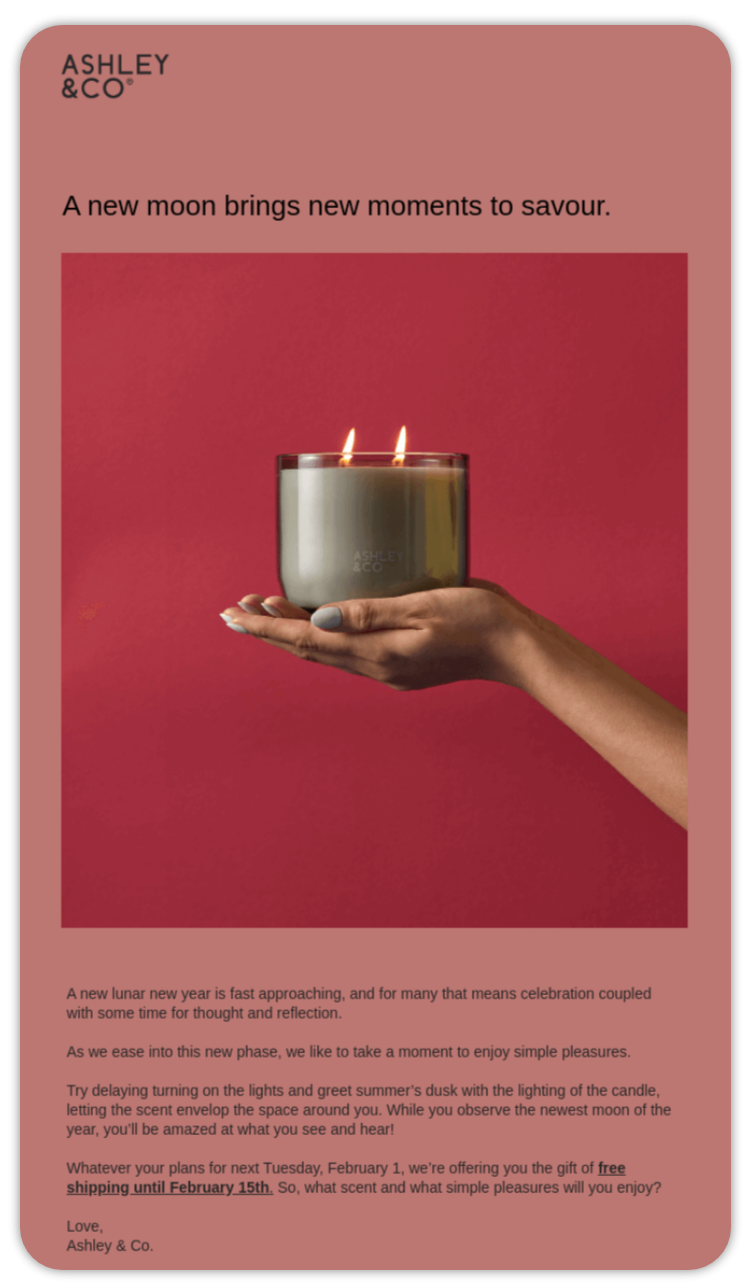
By embracing the principles of color psychology and being conscious of popular trends in 2023 and the future, your email campaigns will look more dynamic and encourage better responses from your current and future audiences.
Author:
Eva Chan is a Career Counselor and Certified Professional Resume Writer (CPRW) at Resume Genius, and has a background in the education management industry. Eva graduated from the University of British Columbia with a bachelor’s degree in English. She’s since coached several professionals with building their resumes and finding fulfilling work.





